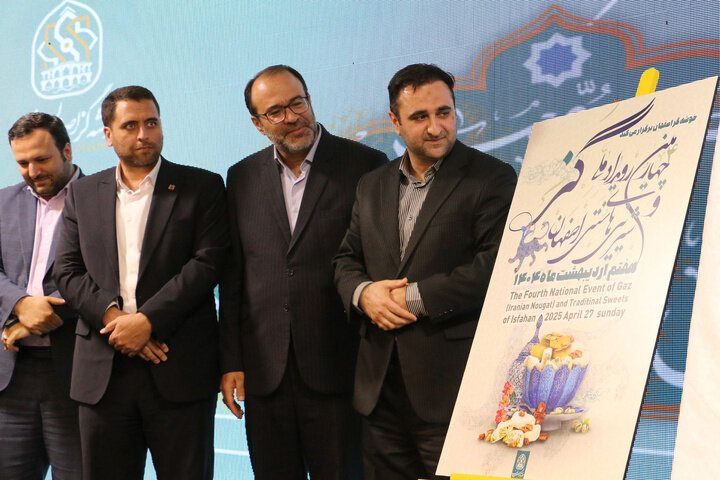Isfahan’s iconic Gaz heritage celebrated

TEHRAN – The skill of making Gaz, a nougat that originated in Isfahan centuries ago, was marked at a special ceremony held in the Iranian city on Saturday evening.
The event was attended by Deputy Tourism Minister Ali-Asghar Shalbafian, Isfahan’s Mayor Ali Qasemzadeh, Mehdi Toghyani, a member of Iran’s Parliament representing Isfahan, along with several other officials, travel insiders and cultural heritage enthusiasts.
The event took place at the Abbasi Hotel as part of the third annual celebration of Gaz’s registration as a national intangible cultural heritage of Iran.
In his address, Shalbafian expressed deep respect for those who have preserved and promoted Gaz as a key element of Isfahan’s intangible heritage. He emphasized the unique hospitality of Isfahan’s residents, noting that Gaz has become a symbol of this tradition.
“Isfahanis prepare Gaz for their guests, and the preservation of this cultural identity over the years is truly commendable,” Shalbafian remarked.
He further highlighted that cultural events like the national registration of Gaz help in familiarizing people with the lifestyle and attractions of a city, thus contributing to tourism.
Qasemzadeh, also spoke at the event, underscoring Gaz as an essential part of the city’s cultural heritage. He warned that without proper recognition and registration, such intangible heritage could be at risk of being lost or appropriated by others.
Toghyani, praised the collective effort that led to Gaz receiving that national recognition. He noted that three years ago, there was little acknowledgment of Gaz’s cultural significance, but today it stands as a proud emblem of Isfahan’s identity.
Gaz, often referred to as Persian Nougat, originates from Isfahan and is a beloved traditional sweet in Iran. It is made from ingredients like pistachios, almonds, rose water, egg whites, and the sap of the Persian manna plant. Gaz is typically enjoyed with tea or sherbet, especially during festive occasions such as Nowruz, the Persian New Year.
Isfahan was once a crossroad of international trade and diplomacy during the Safavid era and now it is one of Iran’s top tourist destinations for good reasons.
It is filled with many architectural wonders, such as unmatched Islamic buildings, bazaars, museums, Persian gardens, and tree-lined boulevards. It’s a city for walking, getting lost in its mazing bazaars, dozing in beautiful gardens, and meeting people.
Isfahan is renowned not only for the abundance of great historical bridges but also for its ‘life-giving river’, the Zayandeh-Rood, which has long bestowed the city an original beauty and fertility.
The city has long been nicknamed as Nesf-e-Jahan, which is translated into “half the world”, meaning seeing it is relevant to see half the world.
AM
Leave a Comment